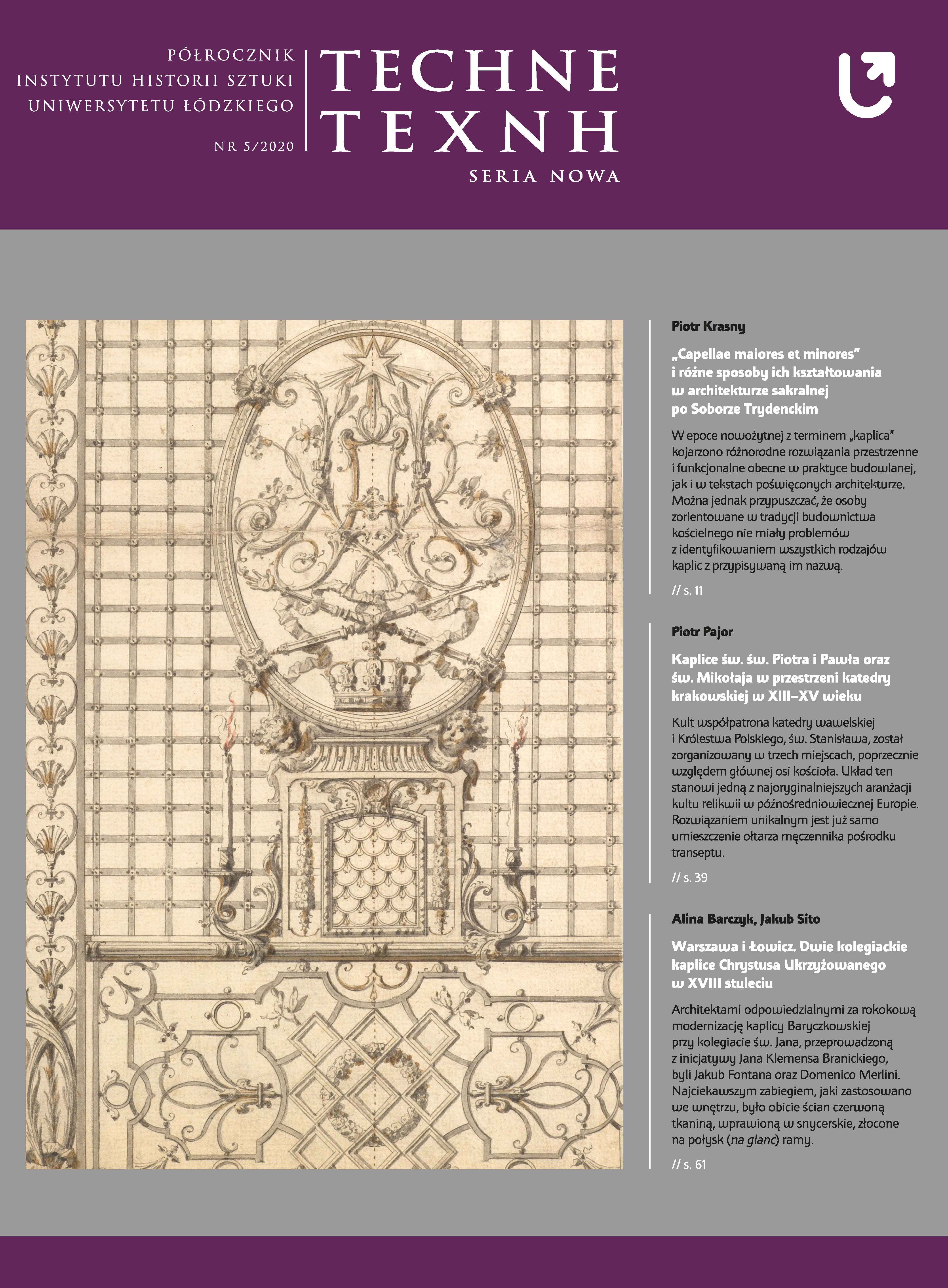Kaplice św. św. Piotra i Pawła oraz św. Mikołaja w przestrzeni katedry krakowskiej w XIII–XV wieku
Chapels of St. st. Peter and Paul and St. Nicholasin the space of the Cracow cathedral in the 13th–15th centuries
Author(s): Piotr PajorSubject(s): Fine Arts / Performing Arts, Architecture
Published by: Wydawnictwo Uniwersytetu Łódzkiego
Keywords: cult of Saints; relics; Gothic architecture; Kraków; Middle Ages
Summary/Abstract: The article presents a proposal for a new reading of the functions, history and formal transformations of the chapels of St. st. Peter and Paul and St. Nicholas. The chapels were added to the aisles of the romanesque cathedral, but during the construction of the present church (1320–1364) they were included in the new building, which lead to their extensive reconstruction and enlargement. The time and circumstances of the construction of the chapel of St. Nicholas are unknown. Chapel of St. st. Peter and Paul, according to the local tradition, in its original form, was founded by Bishop Prandota, most likely in connection with the cult of St. Stanislaus, canonized in 1253. Although, according to almost all the literature to date, a year later the saint’s relics were placed in the center of the nave of the cathedral, it seems more likely that they were placed in the aforementioned chapel. In the Gothic cathedral, the altar of St. Stanislaus was moved to its central point, but the chapel of St. st. Peter and Paul retained an important role in the worship of the martyr, as it included his arm reliquary, and from some point on also an old empty sarcophagus, in which, after canonization, the main particle of the remains were laid. In the 15th century chapel of St. Nicholas was the place where the reliquary of the saint’s head was presented. Fot this purpose, gallery was erected above its entrance. The chapels were extended so that they joined both the aisles and the transept, in the center of which the altar of St. Stanislaus was placed; thus, all three objects form a line that crosses the main axis of the church. It seems that the decision for such a sacral topography composition was made already during the construction of the cathedral, modifying the original project, assuming the erection of a narrow transept.
Journal: TECHNE. Seria Nowa
- Issue Year: 2020
- Issue No: 5
- Page Range: 39-59
- Page Count: 21
- Language: Polish

